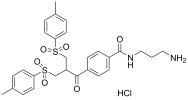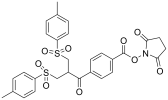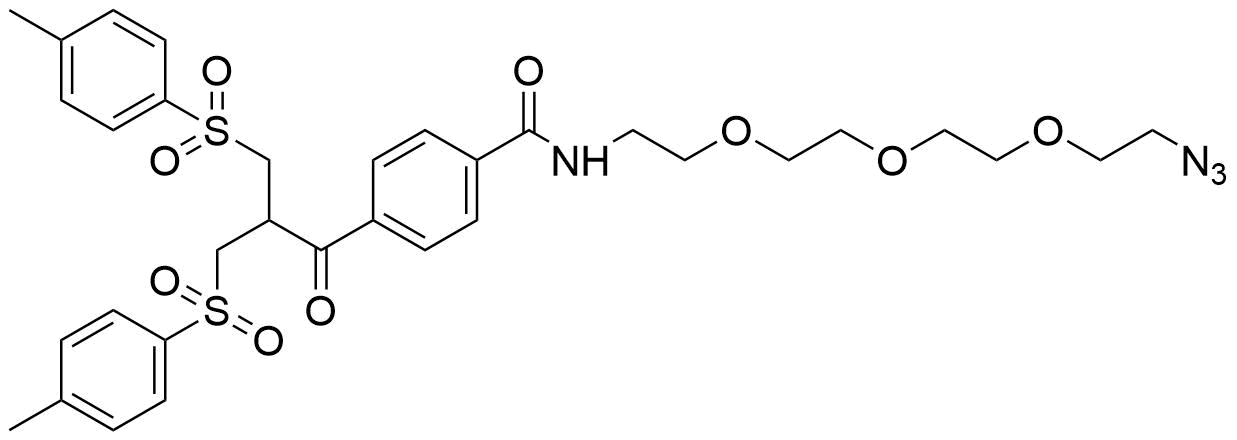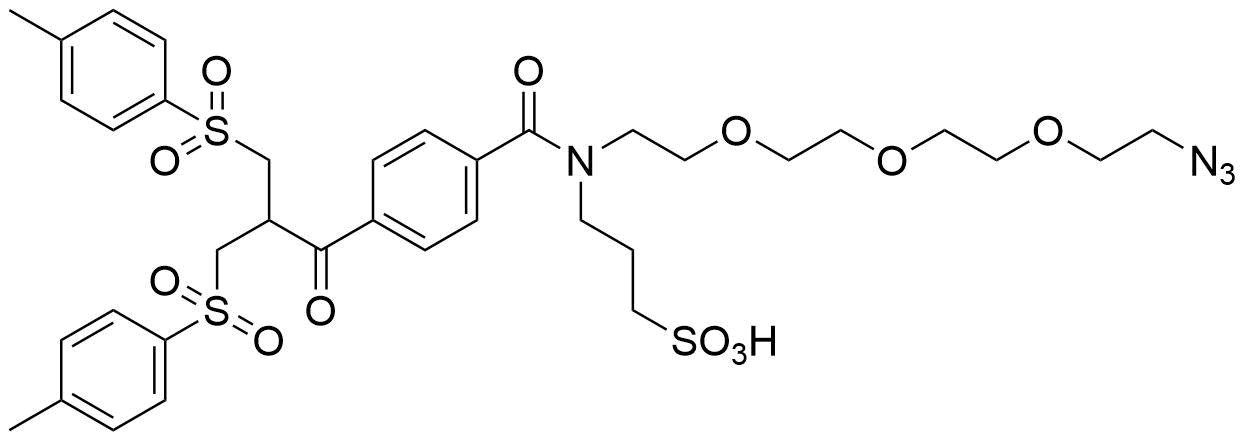Bis-sulfone PEG contains a bis-sulfone group and a polyethylene glycol (PEG) moiety. The bis-sulfone compound is a highly reactive bis-alkylation reagent. It readily react with two cysteine thiols that is derived from reduction of the disulfide bridge on protein/antibody to form site specific conjugation. The ADCs using bis-sulfone PEG linkers shows superior homogeneity and improved solubility, biocompatibility, and stability.
For example, the clinical stage drug candidate OBI-999 is derived from conjugation of the GH-targeting mAb OBI-888 with MMAE through a ThioBridge and a protease cleavable peptide-based linker. The linker contains a valine-citrulline-p-aminobenzyl (PAB) system to ensure stability in the bloodstream and specific cleavage by cathepsin B after internalization. The bis-sulfone functionalized drug linker was site-specifically attached to OBI-888 by cross-linking to the reduced cysteines in the Fab and hinge regions of the antibody to form Thiobridges. OBI-999 exhibited excellent homogeneity with a DAR of 4 (>95%), while other ADCs have wide range of DAR from of 1 to 8. PEG24 linked to the glutamic acid in the linker is used to reduce the hydrophobicity of OBI-999. Compared with currently approved ADCs, OBI-999 is more homogenous and more stable than ADCs that utilize a maleimide linker.*

Thiobridges in the controlled site specific conjugation afford homogenous ADC (DAR = 4)
Bis-sulfone alkylating labeling involves two steps: 1. disulfide reduction to release the two cysteine thiols and 2. re-forming a three-carbon bridge by bis-alkylation to which other functional group is covalently attached. This process avoids the potential irreversible denaturation of the proteins by maintaining their tertiary structure. This bis-sulfone approach, together with the dibromo-maleimide approach, offers biologists a great tool for site specific bioconjugation that impairs no or least biological activities.
The PEG-bis-sulfone can also undergoes site-specific conjugation to the histidines in C or N-terminal tag without metal chelation. The site selective PEGylation between the poly-histidine tag (His-tag) bearing protein and PEG-bis-sulfone through a bis-alkylation process represents a promising conjugation approach that retains the biological activity after protein modification/purification.*
*https://doi.org/10.1158/1535-7163.MCT-20-0763
*https://pubs.rsc.org/en/content/articlehtml/2019/sc/c8sc03355b



















